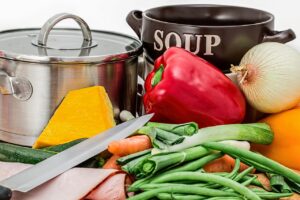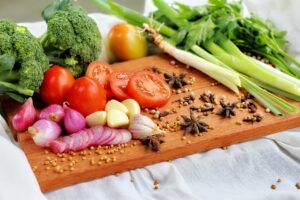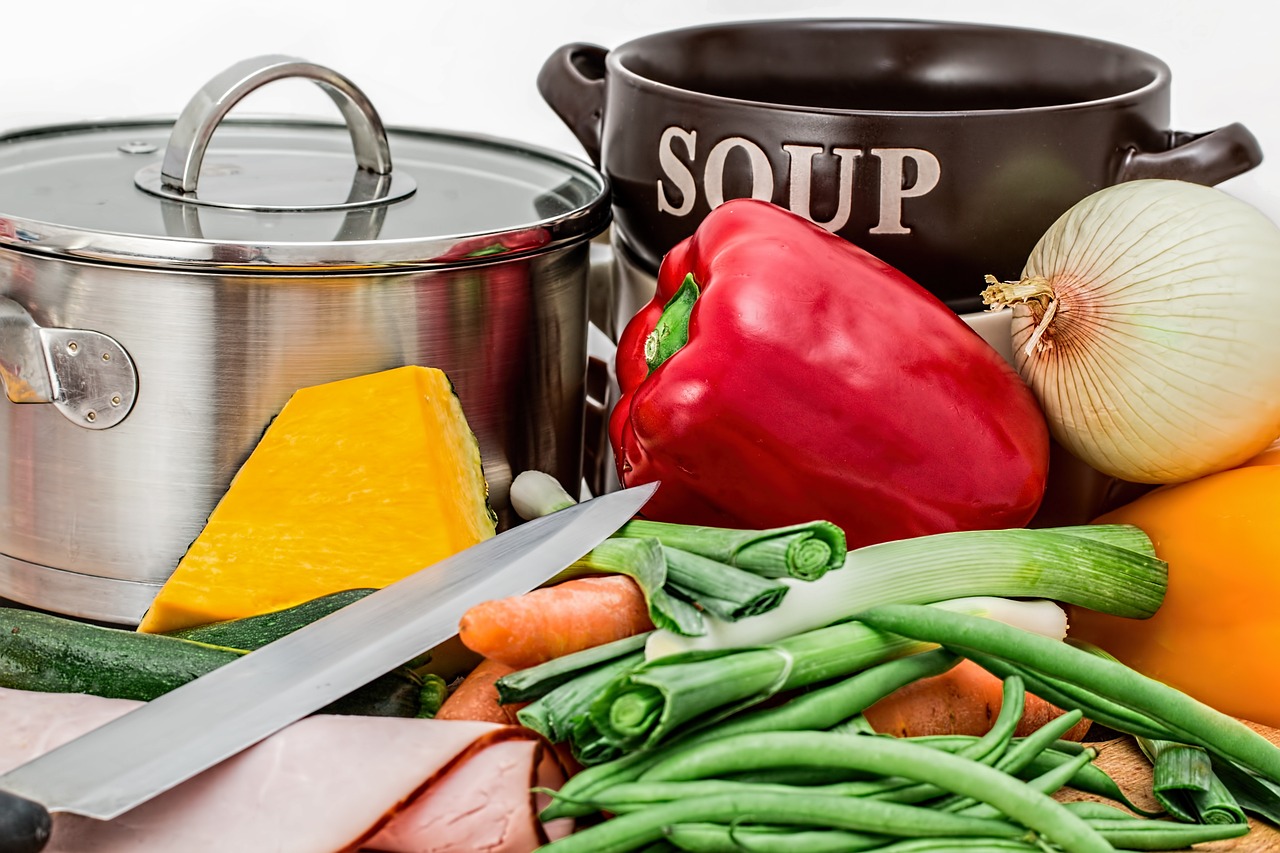One of my pet peeves is letting my fresh vegetables go bad. and another NOT saving money! In this article, you will discover a variety of ways to save money while also keeping your vegetables fresh. By properly storing your veggies, not only do you preserve their taste and nutrition, but you also reduce food waste. Happy cook!
One important tip is to utilize your refrigerator’s crisper drawer for most vegetables, except for root vegetables and tomatoes. Additionally, separating fruits from vegetables in the refrigerator can prevent premature ripening. You’ll also learn specific storage methods for asparagus, scallions, and herbs. Incorporating the FIFO rule, repurposing leftovers into nourishing soups and stews, and preserving veggies through drying, freezing, and pickling are all excellent ways to extend their shelf life.
Lastly, purchasing in-season produce ensures the freshest and most nutritious options. Prepare to discover practical tips that will not only save you money but also transform the way you approach vegetable preservation.

This image is property of images.pexels.com.
1. Proper Storage
When it comes to keeping your vegetables fresh, proper storage is key. By storing your veggies correctly, you can preserve their taste and nutrition for longer periods of time. Let’s explore some tips and techniques for proper storage.
1.1 Refrigerator Crisper Drawer
The refrigerator crisper drawer is designed specifically for storing fruits and vegetables. Most vegetables should be stored in this drawer, as it provides the optimal humidity and temperature levels to keep them fresh. However, it’s important to note that root vegetables and tomatoes should be kept outside of the crisper drawer, as they have different storage requirements.
1.2 Separating Vegetables and Fruits
To prevent premature ripening, it’s important to separate your vegetables from your fruits in the refrigerator. Fruits release ethylene gas, which can speed up the ripening process of vegetables. By keeping them separate, you can extend the freshness of your produce.
1.3 Storing Asparagus and Scallions in Water
Asparagus and scallions prefer to be stored in water to maintain their freshness. Simply place the bottoms of the stalks in a container with a few inches of water and cover the tops with a plastic bag. This will help to keep them hydrated and crisp.
1.4 Chopped Veggies in Sealed Containers
If you’ve already chopped your vegetables and want to store them for a few days, it’s important to keep them in sealed containers. This will help to prevent moisture loss and maintain their texture. Be sure to label the containers with the contents and the date, so you can easily keep track of what needs to be used first.
1.5 Storing Herbs in the Refrigerator
Herbs can be stored in the refrigerator to keep them fresh for longer. Simply rinse them and pat them dry, then wrap them in paper towels to absorb any excess moisture. Place the wrapped herbs in a zippered plastic bag and store them in the refrigerator. This will help to maintain their flavor and prevent wilting.
2. FIFO Rule
2.1 What is the FIFO Rule?
The FIFO (First-In, First-Out) rule is a simple concept that can help reduce food waste. The idea behind the rule is to use the oldest food items first, ensuring nothing goes to waste. By implementing this rule in your kitchen, you can ensure that your vegetables are being used before they spoil.
2.2 Implementing the FIFO Rule
To implement the FIFO rule, it’s important to organize your fridge and pantry in a way that allows you to easily access the oldest items. Start by labeling your containers with the date they were prepared or purchased. When it comes time to cook, make a conscious effort to use the oldest vegetables first. By following this rule, you’ll be able to minimize food waste and make the most of your fresh produce.
3. Saving Money – Repurposing Veggies
3.1 Making Soups, Stews, and Broths
One of the best ways to utilize vegetables that are nearing the end of their freshness is to make soups, stews, and broths. These dishes not only allow you to use up a variety of vegetables, but they also create flavorful and nutritious meals. Chop up any vegetables that are starting to wilt or soften, and add them to a pot with some broth or water. Simmer until the vegetables are tender, and season to taste. This is a great way to repurpose and enjoy vegetables that may have otherwise gone to waste.
3.2 Utilizing Vegetable Scraps
Instead of throwing away vegetable scraps, consider finding creative ways to use them in your cooking. For example, carrot tops can be blended into a pesto or used as a garnish for salads. Broccoli stalks can be grated and added to coleslaw or stir-fries. By getting creative with your vegetable scraps, you can minimize waste and maximize flavor in your dishes.
4. Preserving Veggies
4.1 Drying Vegetables
Drying vegetables is a great way to extend their shelf life. Some vegetables, such as cherry tomatoes, mushrooms, and herbs, are particularly well-suited for drying. To dry vegetables, start by washing and slicing them into uniform sizes. Lay the slices on a baking sheet and place them in the oven on low heat or use a food dehydrator. Allow the vegetables to dry until they are crispy and fully dehydrated. Store them in an airtight container in a cool, dark place for future use.
4.2 Freezing Vegetables
Freezing vegetables is another effective method for preservation. Many vegetables, such as peas, corn, and green beans, freeze well and can be used in various dishes throughout the year. To freeze vegetables, blanch them in boiling water for a short period of time, then immediately transfer them to an ice bath to stop the cooking process. Once cooled, dry the vegetables and place them in freezer-safe containers or bags. Be sure to label them with the contents and date before storing them in the freezer.
4.3 Pickling Vegetables
Pickling is a traditional preservation method that can add a burst of flavor to your vegetables. By immersing vegetables in a vinegar-based brine, you can create tangy and crunchy pickled vegetables. To pickle vegetables, start by cleaning and chopping them into desired shapes. Boil a mixture of vinegar, water, sugar, and salt, and pour it over the vegetables in sterilized jars. Allow the jars to cool before sealing them and storing them in the refrigerator. Pickled vegetables can be enjoyed as a side dish, added to sandwiches, or used to enhance the flavor of various dishes.

This image is property of images.pexels.com.
5. Saving money works in Purchasing In-Season Produce
5.1 Benefits of In-Season Produce
Purchasing in-season produce has numerous benefits. Firstly, in-season produce tends to be more flavorful and nutritious since it is harvested at its peak ripeness. Additionally, buying in-season produce supports local farmers and reduces the carbon footprint associated with long-distance transportation. In-season produce is also generally more affordable, as the supply is greater and there is less need for expensive storage and transportation methods.
5.2 Finding In-Season Produce
Finding in-season produce is easier than ever before. Visit your local farmer’s market or grocery store and look for signs or labels indicating the produce is in season. You can also do some research online to find out what fruits and vegetables are in season during specific times of the year in your area. By purchasing in-season produce, you can enjoy the freshest and most nutritious options while supporting local farmers and reducing food waste.
In conclusion, proper storage, practicing the FIFO rule, repurposing veggies, preserving them, and purchasing in-season produce are all valuable methods to keep vegetables fresh, reduce food waste, and maximize the flavors and nutrients of your produce. By implementing these tips and techniques, you can enjoy the deliciousness and benefits of fresh vegetables for longer periods of time.

